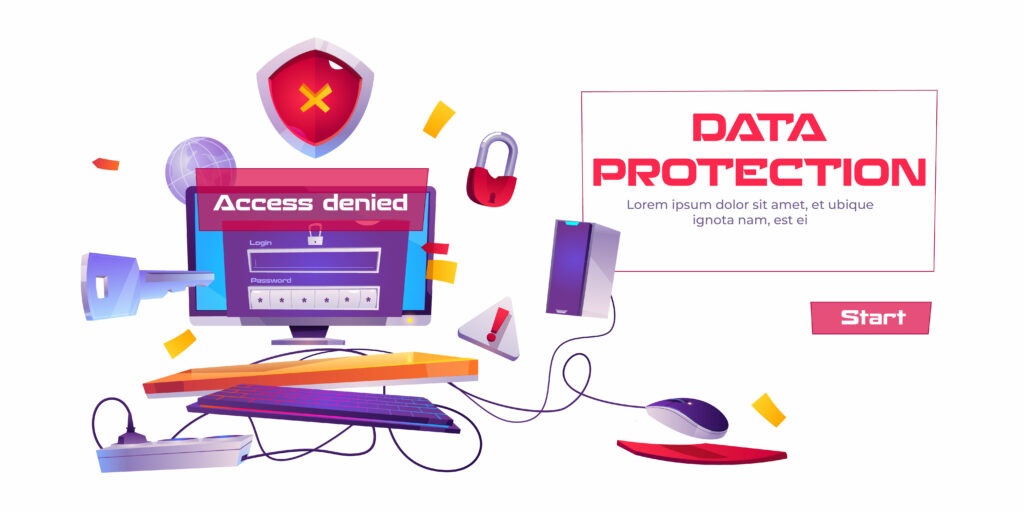Introduction
In today’s digital landscape, the security of your website is of paramount importance. With the increasing frequency and sophistication of cyber attacks, it is crucial to take proactive steps to protect your website and its valuable data. This article will provide you with actionable steps to secure your website from cyber attacks, ensuring the safety and trust of your visitors. So, let’s dive right in and learn how to fortify your website’s defenses!

Understanding the Threat Landscape
Before we delve into the steps to secure your website, it is essential to understand the threat landscape. Cyber attacks come in various forms, ranging from common hacking techniques to advanced malware and phishing attempts. Hackers exploit vulnerabilities in your website’s infrastructure, applications, or user behavior to gain unauthorized access, steal sensitive information, or cause disruptions. By comprehending the threats you face, you can effectively implement appropriate security measures.
Step 1: Keep Software Up to Date
Regularly updating your website’s software is the first line of defense against cyber attacks. This includes your content management system (CMS), plugins, themes, and any other software used. Updates often patch security vulnerabilities that hackers could exploit. Always ensure you are using the latest versions of your software and promptly apply security patches as they become available.
Step 2: Use Strong, Unique Passwords
A strong password is a simple yet powerful safeguard against unauthorized access. It is crucial to use unique passwords for each online account associated with your website. Avoid using common passwords or easily guessable information such as birthdays or names. Instead, create complex passwords with a combination of uppercase and lowercase letters, numbers, and special characters. Consider using a password manager to securely store and generate strong passwords.
Step 3: Enable Two-Factor Authentication (2FA)
Two-factor authentication adds an extra layer of security to your website login process. It requires users to provide two forms of identification: something they know (password) and something they have (e.g., a verification code sent to their mobile device). Enabling 2FA can significantly reduce the risk of
unauthorized access, even if a password is compromised.
Step 4: Secure Your Website’s Network
Securing your website’s network is crucial to prevent unauthorized access and data breaches. Here are some steps you can take:
Sub-heading: Use a Secure Hosting Provider
Choosing a reputable hosting provider is essential for website security. Look for providers that offer robust security measures, such as firewalls, intrusion detection systems, and regular backups. Research and select a hosting provider known for their commitment to security and reliability.
Sub-heading: Implement SSL/TLS Encryption
Secure Socket Layer (SSL) or Transport Layer Security (TLS) encryption is vital for protecting data transmitted between your website and its visitors. It encrypts sensitive information, such as login credentials and payment details, making it difficult for attackers to intercept and decipher. Obtain an SSL/TLS certificate and configure your website to use HTTPS protocol for secure communication.
Sub-heading: Set Up a Web Application Firewall (WAF)
A web application firewall acts as a barrier between your website and potential threats. It filters incoming web traffic, identifying and blocking malicious requests, such as SQL injections or cross-site scripting attacks. Deploying a WAF adds an extra layer of protection to your website’s applications and helps detect and mitigate common vulnerabilities.
Step 5: Regularly Back Up Your Website
Regularly backing up your website is an essential step in securing your digital assets. In the unfortunate event of a successful cyber attack or data loss, having up-to-date backups allows you to restore your website quickly. Make sure your backups are stored securely, either on off-site servers or in the cloud, to ensure their availability in case of physical damage or server compromise.
Step 6: Educate Yourself and Your Team
Knowledge is power when it comes to cybersecurity. Educating yourself and your team about best practices and common threats can significantly reduce the risk of falling victim to cyber attacks. Provide training on topics such as identifying phishing emails, practicing safe browsing habits, and recognizing social engineering tactics. Encourage everyone to remain vigilant and report any suspicious activities or potential security breaches promptly.
Frequently Asked Questions (FAQs)
1: How often should I update my website’s software?
It is recommended to update your website’s software as soon as new updates or security patches are released. Regularly check for updates from your CMS provider, plugin developers, and theme authors. Timely updates help safeguard your website against known vulnerabilities.
2: Can I use the same password for multiple accounts?
No, using the same password for multiple accounts increases the risk of a security breach. If one account is compromised, the attacker can gain access to all other accounts using the same password. Always use unique passwords for each online account.
3: What is the purpose of a web application firewall (WAF)?
A web application firewall acts as a protective barrier between your website and potential threats. It monitors and filters incoming web traffic, identifying and blocking malicious requests. A WAF helps protect your website’s applications from common vulnerabilities and attacks.
4: How often should I back up my website?
It is recommended to back up your website regularly, depending on how frequently you update its content. Ideally, schedule backups on a daily or weekly basis to ensure you have the latest version of your website’s data.
5: Can I rely solely on a strong password to secure my website?
While a strong password is an essential security measure, relying solely on it is not sufficient. Implementing additional security measures, such as two-factor authentication, regular software updates, and network security measures, significantly enhances your website’s overall security posture.
6: What should I do if I suspect a security breach on my website?
If you suspect a security breach on your website, take immediate action. Change all passwords associated with your website, scan your website for malware, and investigate any suspicious activities. Consider consulting a cybersecurity professional to assist with the incident response and recovery process.
Conclusion
Securing your website from cyber attacks requires a proactive and multi-layered approach. By following the steps outlined in this article, including keeping software up to date, using strong passwords and 2FA, securing your website’s network, regular backups, and educating yourself and your team, you can significantly enhance your website’s security posture. Remember, cybersecurity is an ongoing process, and staying informed about emerging threats and best practices is essential to protect your website and its visitors from potential harm.

